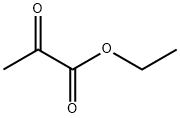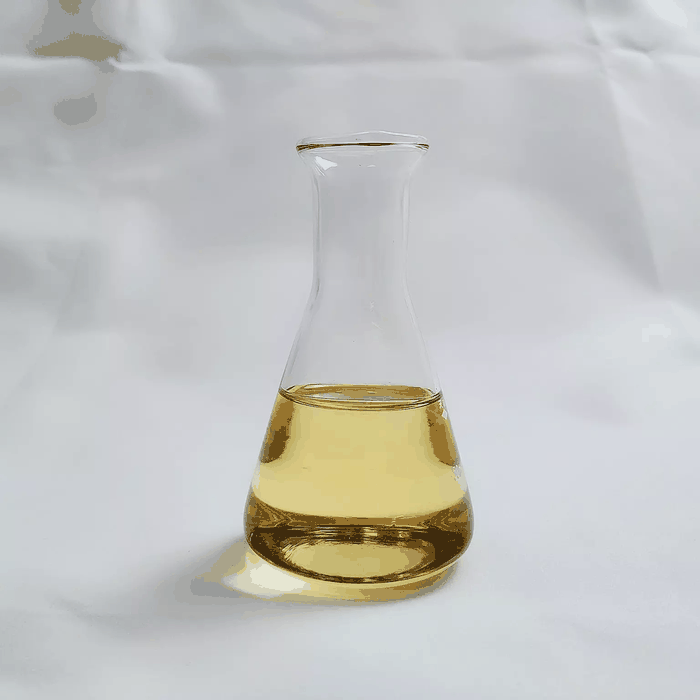Diethyl 1,3-acetonedicarboxylate
Synonym(s):Diethyl 3-oxoglutarate
- CAS NO.:105-50-0
- Empirical Formula: C9H14O5
- Molecular Weight: 202.2
- MDL number: MFCD00009200
- EINECS: 203-302-2
- SAFETY DATA SHEET (SDS)
- Update Date: 2025-03-16 22:27:45

What is Diethyl 1,3-acetonedicarboxylate?
Chemical properties
clear colorless to pale yellow liquid
The Uses of Diethyl 1,3-acetonedicarboxylate
Diethyl 1,3-acetonedicarboxylate was used in the synthesis of novel pyrido[4,3,2-de]quinoline, isoquinolino[6,5,4,3-cde] quinoline and pyrazomycin. It was used as starting reagent in the synthesis of (±)-thienamycin, potent β-lactam antibiotic.
Properties of Diethyl 1,3-acetonedicarboxylate
| Melting point: | 125 °C |
| Boiling point: | 250 °C (lit.) |
| Density | 1.113 g/mL at 25 °C (lit.) |
| refractive index | n |
| Flash point: | 187 °F |
| storage temp. | Sealed in dry,2-8°C |
| solubility | Chloroform (Slightly), Ethyl Acetate (Slightly) |
| pka | 9.66±0.46(Predicted) |
| form | Liquid |
| color | Clear colorless to pale yellow |
| Water Solubility | 10 g/L (20 ºC) |
| Sensitive | Moisture Sensitive |
| BRN | 640146 |
| CAS DataBase Reference | 105-50-0(CAS DataBase Reference) |
| NIST Chemistry Reference | Pentanedioic acid, 3-oxo-, diethyl ester(105-50-0) |
| EPA Substance Registry System | Pentanedioic acid, 3-oxo-, diethyl ester (105-50-0) |
Safety information for Diethyl 1,3-acetonedicarboxylate
| Signal word | Warning |
| Pictogram(s) |
 Exclamation Mark Irritant GHS07 |
| GHS Hazard Statements |
H227:Flammable liquids |
| Precautionary Statement Codes |
P210:Keep away from heat/sparks/open flames/hot surfaces. — No smoking. P280:Wear protective gloves/protective clothing/eye protection/face protection. P403+P235:Store in a well-ventilated place. Keep cool. P501:Dispose of contents/container to..… |
Computed Descriptors for Diethyl 1,3-acetonedicarboxylate
| InChIKey | ZSANYRMTSBBUCA-UHFFFAOYSA-N |
Diethyl 1,3-acetonedicarboxylate manufacturer
ASM Organics
Andhra Pradesh
Phone:91-9866122393
Whatsapp: 91-9866122393
product: B-Ketoglutaric acid diethyl ester
New Products
Methyl (R)-1-Boc-4,4-difluoropyrrolidine-2-carboxylate 2,2-Difluoropropylamine hydrochloride tert-butyl 3-bromoazetidine-1-carboxylate (R)-1-Boc-3-hydroxypyrrolidine DIFLUOROACETIC ANHYDRIDE 2,2-Difluoropropionic acid Diallylamine, 99% Calcium hydroxide, 95% Aluminum oxide, basic 2-Bromophenylacetonitrile, 97% L-tert-Leucine,97% N-Hydroxy-2-methylpropanimidamide 4-(3,4-Dichlorophenyl)-3,4-Dihydro-N-Methyl-1-(2H)-Naphthalenimine (Schiff Base) 2-AMINO-3,5-DIBROMO BENZALDEHYDE [ADBA] L-Glutamic Acid Dimethyl Ester Hcl 10-Methoxy-5H-dibenz[b,f]azepine 5-Cyanophthalide N, N-Carbonyldiimidazole (CDI) Dibenzoyl Peroxide Titanium Dioxide 2-(Methylthio) Benzonitrile Sodium Acetate Anhydrous Allopurinol 1,5-DibromopentaneRelated products of tetrahydrofuran








You may like
-
 105-50-0 diethyl 3-oxopentanedioate 95%View Details
105-50-0 diethyl 3-oxopentanedioate 95%View Details
105-50-0 -
 Diethyl 1,3-acetonedicarboxylate CAS 105-50-0View Details
Diethyl 1,3-acetonedicarboxylate CAS 105-50-0View Details
105-50-0 -
 Diethyl 1,3-Acetonedicarboxylate CAS 105-50-0View Details
Diethyl 1,3-Acetonedicarboxylate CAS 105-50-0View Details
105-50-0 -
 Diethyl 1,3-acetonedicarboxylate, 96% CAS 105-50-0View Details
Diethyl 1,3-acetonedicarboxylate, 96% CAS 105-50-0View Details
105-50-0 -
 Diethyl 1,3-acetonedicarboxylate 97% CAS 105-50-0View Details
Diethyl 1,3-acetonedicarboxylate 97% CAS 105-50-0View Details
105-50-0 -
 Ethyl-2-Chloroacetoacetate 609-15-4View Details
Ethyl-2-Chloroacetoacetate 609-15-4View Details
609-15-4 -
 609-15-4View Details
609-15-4View Details
609-15-4 -
 27143-07-3View Details
27143-07-3View Details
27143-07-3
Statement: All products displayed on this website are only used for non medical purposes such as industrial applications or scientific research, and cannot be used for clinical diagnosis or treatment of humans or animals. They are not medicinal or edible.
